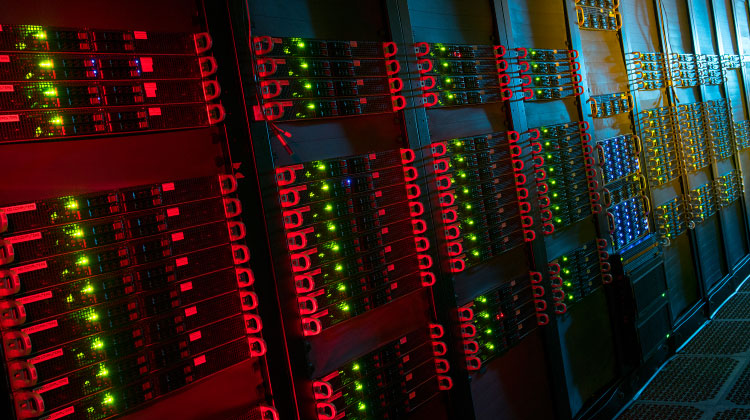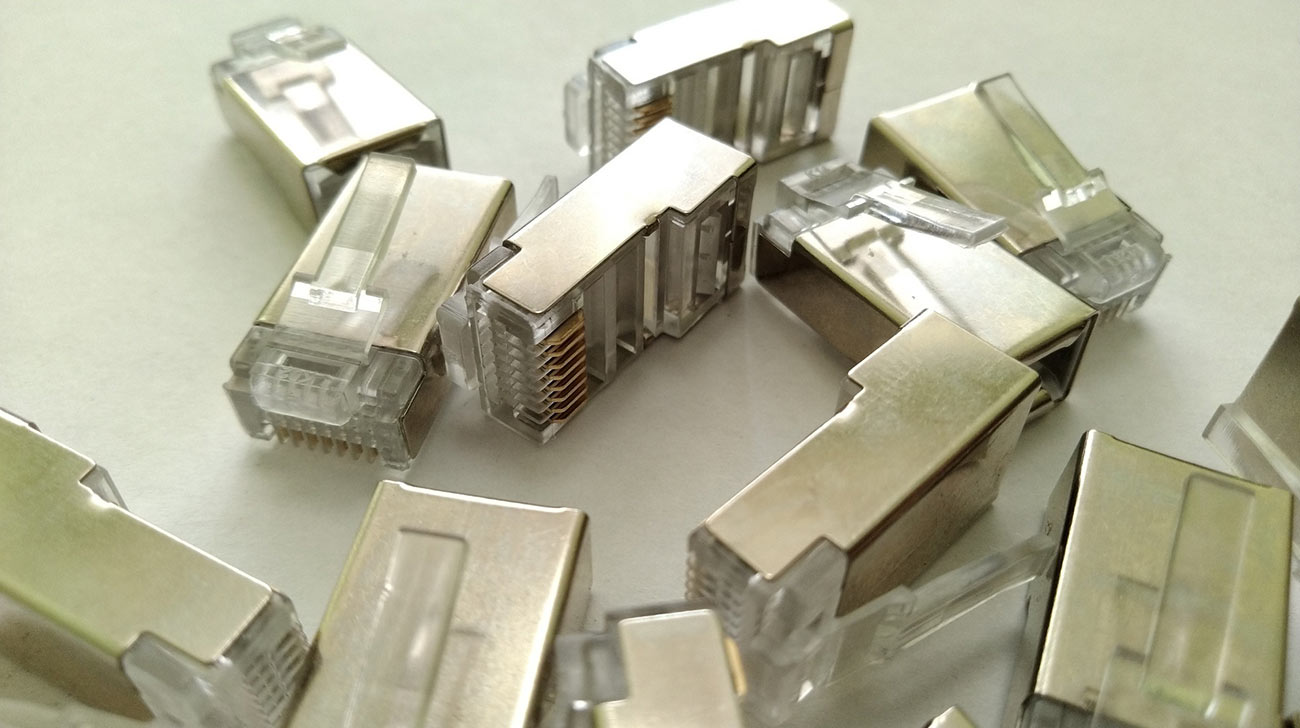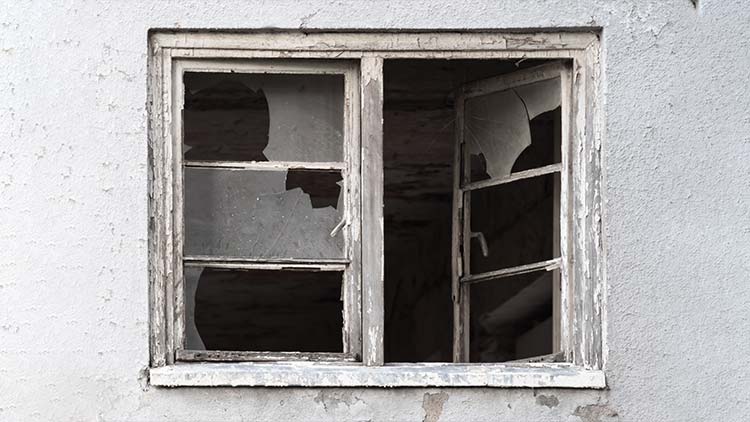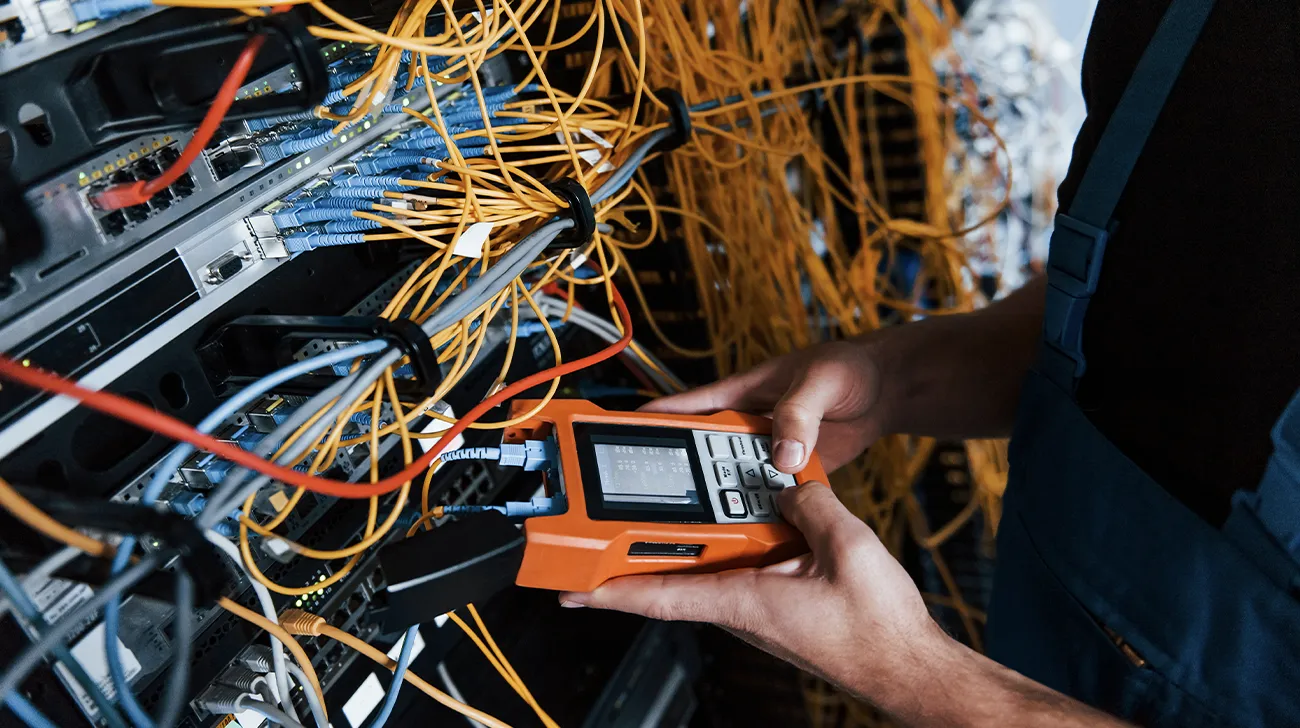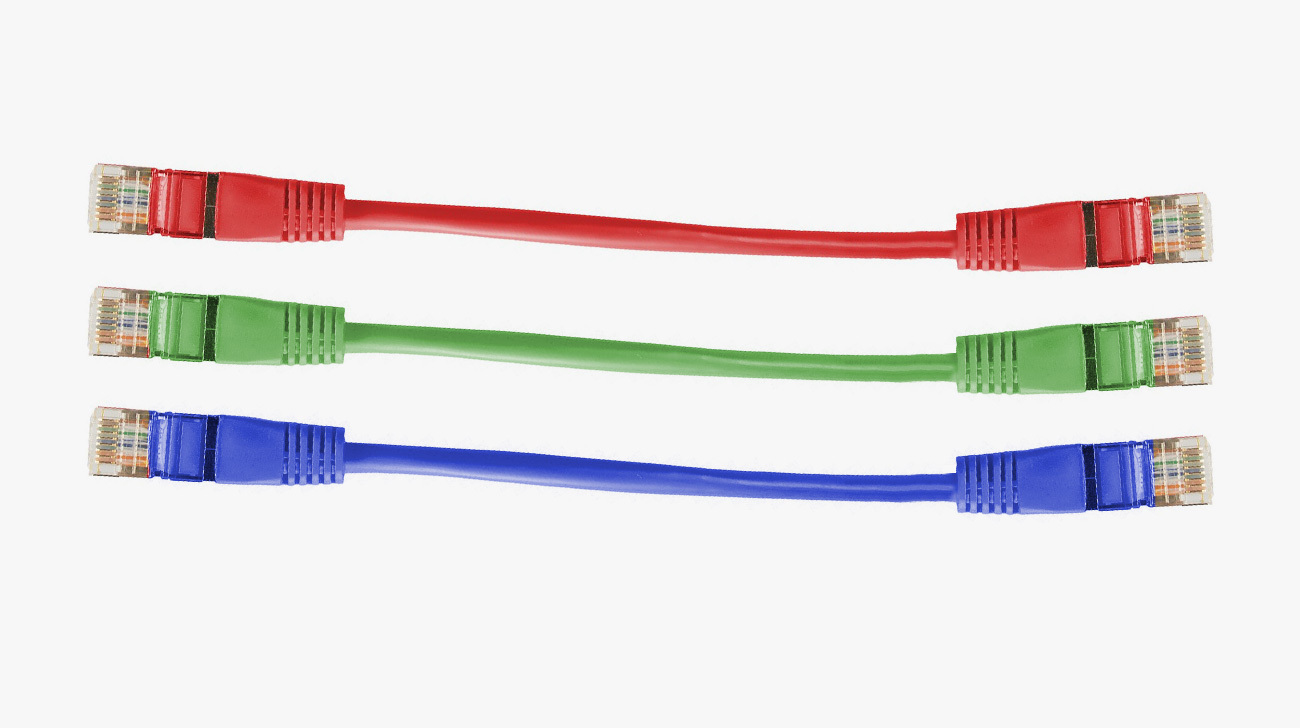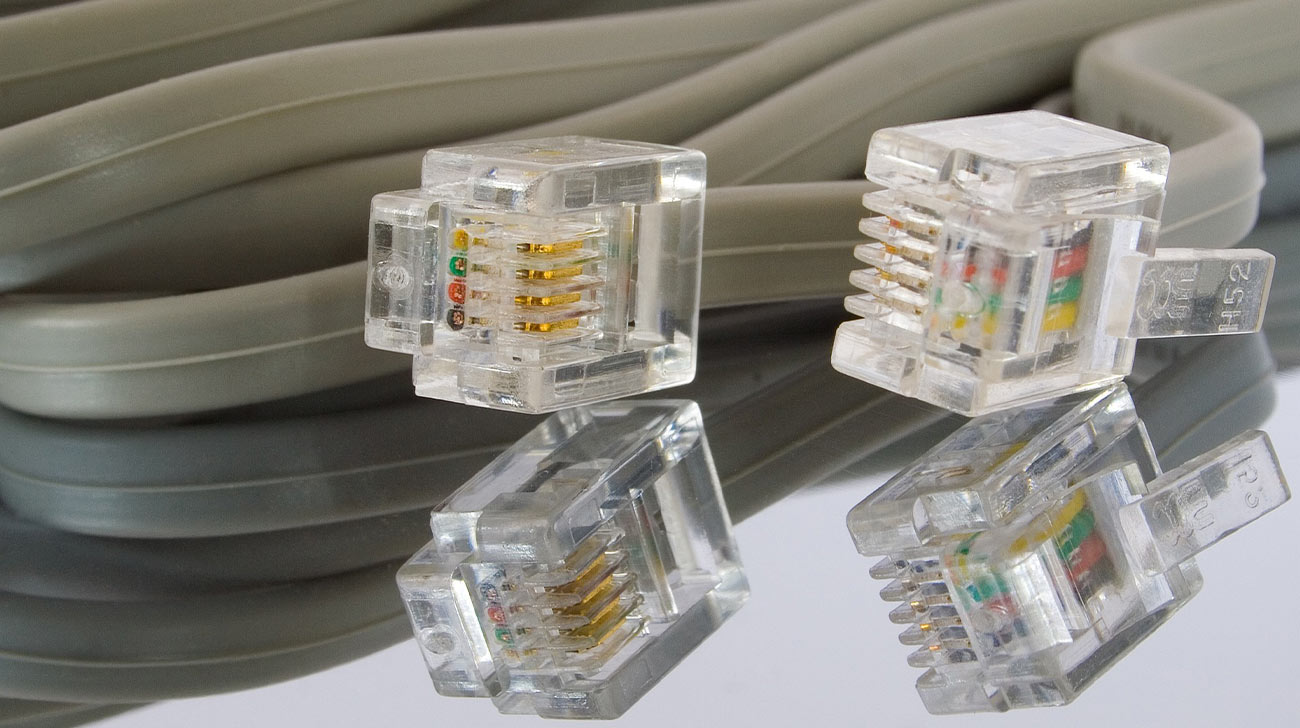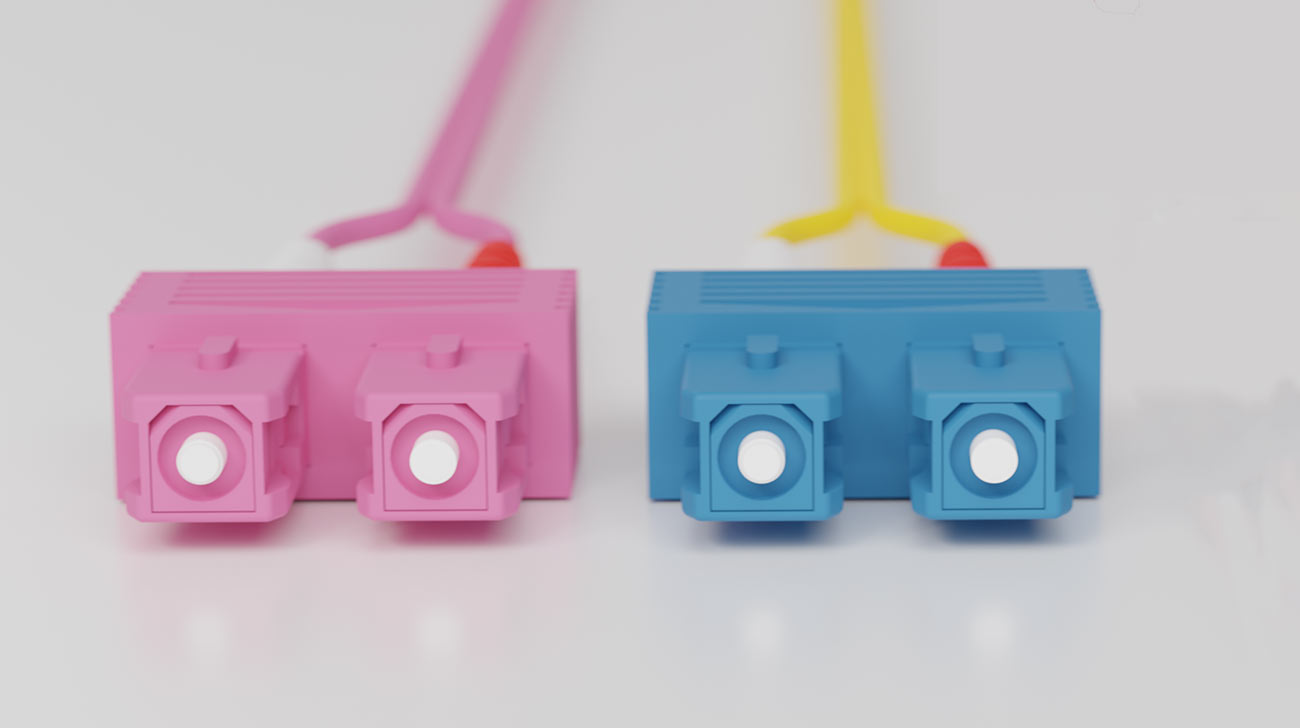What is a server rack and when do I need one? What is the difference between a server rack and a network rack? These and many more common questions will be answered in our blog post.
Server rack or network rack?
When setting up a network you should always pay attention to how you arrange your components. Server and network racks offer the perfect framework for this – in the truest sense of the word.
But what is the difference between the two of them?
First and foremost, both serve to store and organise the active and passive components of your network. These can be switches, routers, UPSs and cables or servers. In addition, the cabinets have the task of protecting the installed technology from external influences.
Another important benefit of them is, of course, protection against burglary. Locks and security systems are used to protect the contents of both server and network racks from theft and especially from unauthorised access.
However, there is a small but subtle difference: server racks are usually built somewhat more sturdily and sometimes have several cooling systems.
On the one hand, this allows the load of the installed components to be carried. Also the cabinet does not tip over at the front when the rails are pulled out.
But, the work processes of the devices cause a high temperature. This wants to be kept correspondingly low in a closed cabinet to prevent overheating.
In comparison to the network rack, a server rack is also built somewhat deeper. It has a depth of about 1,000 to 1,200mm (39,37 to 47,24 inches).
In contrast, the telecommunications cabinet is considerably smaller at 600-800mm (23,62 to 31,50 inches). A network rack can also be mounted on the wall, provided it is a special, small wall cabinet.
What is a server?
A server is a powerful, central network computer. It makes its resources available to other computers. Functional and infrastructural network services are realised via the server. Data that needs to be accessed by several people can be stored here.
When we speak of a server, we must always distinguish between hardware and software. A hardware server is basically the physical machine that is integrated into a network.
In addition to operating systems, software-based servers can also be installed on it. The hardware server is often referred to as the “host”.
The software server, on the other hand, is the programme that is provided to make services available to “clients”, i.e. users.
To put it simply, a server is used for communication between individual “clients”. Depending on the type of server and the transmission protocol, different data can be exchanged.
So what types of servers are there? If a client with the appropriate software makes a request to a server, for example from the website patchbox.com, the contents of the website must be stored somewhere. In this case, the storage location is a so-called web server.
The same applies to e-mail servers, which manage, store and forward e-mails. File servers are servers that store data that is available for private or public use.
Overview of computer server types
| Types of Computer Servers | Transmission Protocol | Tasks |
|---|---|---|
| Web server | Hypertext Transfer Protocol (HTTP) | Saving and preparing web pages + subsequent delivery to clients (e.g. web browsers) |
| Mail server | Simple Mail Transfer Protocol (SMTP) / Internet Message Access Protocol (IMAP) or Post Office Protocol (POP) | Receive, send, forward and save emails for retrieval |
| File server | Among other things File Transfer Protocol (FTP) or Secure File Transfer Protocol (SFTP) | Central storage of data provided to clients |
| Print server | Internet Printing Protocol (IPP) | Print job management |
| Proxy server | Among other things Hypertext Transfer Protocol (HTTP), File Transfer Protocol (FTP) or Simple Mail Transfer Protocol (SMTP) | Communication interface in computer networks, protection of the client network from external influences |
| Database server | Transmission Control Protocol (TCP) and Internet Protocol (IP) | Allows access to one or more database systems |
| Domain name system server | User Datagram Protocol (UDP) and Transmission Control Protocol (TCP) | Translation of host names (e.g. Patchbox.com) into corresponding IP address |
Rack Server vs. Blade Server System: What is the difference?
A blade server is a compact device that contains a computer used to manage and distribute data across a collection of computers and systems called a network.
Its main characteristic is that it can be scaled quickly and easily. The enclosure contains the power and cooling systems.
It also contains the input-output and usually four connections for all the devices. This means that no unnecessary cables have to be laid inside the server rack when a new device is to be added.
Blade servers are therefore particularly suitable for environments in which the available computing power is to be maximised.
The location of use must also be considered. Servers consume less power and emit less heat than rack servers. There are usually many blades in a confined space in one chassis. As a rule, the chassis must be cooled with fans.
In contrast to the blade server, the rack server is suitable for companies that have installed their infrastructure in rigid housings of a standard size. The servers are firmly screwed into the thrust surfaces. They can also be mechanically fixed in a confined space.
However, the management of the network cables needs to be skilful. An overview can quickly be lost if the cabling is messy.
What does a rack server do?
A rack server is a computer optimised for server operation. It is designed and manufactured to fit into a rectangular mounting system, also called a rack mount.
It contains several mounting slots and is also known as a rack bay. A rack server is designed to hold a hardware unit securely in place with screws. In addition, rack mounts also form better air circulation for the equipment.
This system makes the server landscape in the rack more easily scalable and also more stable.
Rack servers provide data and services for clients. In data centres they are therefore installed in large quantities. Not to be confused with a network rack, which we will look at below.
But how does a rack server work? From a mechanical point of view, the devices can be easily slid out of and back into the cabinet through the rails.
This allows admins or technicians to perform hot swaps, for example, without having to shut down the entire system.
This can reduce costs, but even injuries. Servers are not only heavy, but sometimes also have a hot cabinet on which you could burn yourself.
What is a rack cabinet?
The term rack (meaning “frame”, “cabinet”, “shelf” or “stand”) stands for a holding device that typically combines a number of smaller elements into one unit – such as a stand.
A rack cabinet is often referred to as a server rack or patch cabinet. In addition to patch panels and switches, it primarily contains servers that are physically bolted together.
The rack bay serves to secure the respective component and is supported by the entire frame.
Of course, there are different widths of cabinets. The most common is the 19 inch rack cabinet, which has a standardised width of 19 inches (= 48.26 centimetres).
What do you need for a server rack?
First of all, it should be clarified which components are to be installed in the cabinet. Of course, such a rack mount is not equipped to the top with active components such as servers or switches right from the start.
Depending on the scenario, Blind Panels are still used for the individual racks in order to make the cabinet look good and to avoid empty space.
The question “How do I set up a server rack?” can therefore never have exactly one answer. It always depends on the prevailing scenarios and the components installed.
Network racks are standardised to accommodate components in 19-inch construction. The height on the other hand, also depends on external factors.
What is the ceiling height of the room? Are there lifts through which the cabinet must be transported? Is the door to the planned server room even high enough?
If these points do not pose a problem, it is advisable to choose a higher version in case of doubt, as it is no longer possible to increase the height afterwards.
The unit of measurement “RU has established itself as the standard for the height of server racks. One rack unit (RU) corresponds to 1.75 inches (= 4.445 centimetres).
With the free Rack Planner from PATCHBOX, you can plan and personalize your 19″ rack and tailor it to your needs.
An important component when setting up a server or network rack that applies universally is cable management. If you want to wire it properly, it is advisable to plan the cable routing precisely in advance.
This can save important resources such as energy, nerves, time and, above all, money when replacing or reconnecting individual components if the cables have been laid neatly in advance.
How deep does a server rack have to be?
Once again: depending on the given scenario!
While network racks, as already mentioned, only have a depth of 600 or 800 mm (23,62 to 31,50 inches), server racks are considerably deeper. With up to 1200mm (47,24 inches), they can store very large devices and still offer space for air circulation.
And how deep does a rack for a server have to be? This depends entirely on the components that are to be installed.
However, the specified depth is always the external dimension of the cabinet. Depending on the thickness of the sheet metal, a good four centimetres can be deducted from the “gross depth” of the rack.
How is a server rack constructed?
Server racks usually measure 47 RU. They are 90 centimetres (35,43 inches) to one metre deep (1000mm or 39,37 inches).
Due to the material used and the anti-tilt protection that is sometimes built in, they are enormously stable. Some are even anchored to the floor with screws.
Network racks are often 42 RU high and 600 or 800 millimetres wide (23,62 to 31,50 inches). As already mentioned, they are usually not as sturdily built because the components installed weigh less.
Special rack sizes are mainly found in private environments and less so in corporate environments. These are often special wall-mounted enclosures with an external width of 10 inches or even 19-inch enclosures with only 18 RU.
Tips, guide & Co.
In order to avoid typical problems when setting up systems for 19-inch cabinets, it is a good idea to consider these pitfalls and obstacles beforehand.
Considerations when selecting the server rack are at least as important as the components installed.
Although the vast majority have an external width of 19 inches and the necessary RU can often be easily calculated, the depth of the individual components is the most important factor.
This is because a rack mount usually contains more than just switches, servers, UPSs or routers of one generation.
The depth of servers in particular can vary by a few centimetres depending on the year of manufacture, which can have fatal consequences for the structured cabling of the server.
This is because the lack of space in the network or server rack often means there is no room for power and network supply cables.
In the worst case, air circulation is impeded in a fully occupied rack due to unclean cable management, or doors cannot be opened or closed properly.
Better cable management with PATCHBOX
The retractable cables in the PATCHBOX cable management system solve such problem easily by stowing the cables in a cassette for each component.
In addition, the cables should also be appropriately marked during planning in order to maintain an overview in the event of a failure or an adjustment of the systems. This is easy with the ID Labels from PATCHBOX.
If the assembly and maintenance are to run smoothly, it is advisable to look for alternatives to screws already during commissioning.
Conventional cage nuts and screws are very cumbersome and can be time-consuming – we have therefore developed the /dev/mount, which is a cage nut alternative.
In addition to factors such as cooling, which we already described at the beginning, the factors of vibration and static should not be underestimated.
Due to the weight of server and network racks, they can cause damage to the building if placed in an unwise position (e.g. near loading ramps or stairways).
The installed components such as hard disks or even entire server systems can also be damaged by an unstable floor or vibrations. It is therefore not without reason that server rooms are planned in basement compartments or separate rooms.
Good research is necessary for such planning: Therefore, visit the PATCHBOX homepage or check out our free Rack Planner.
